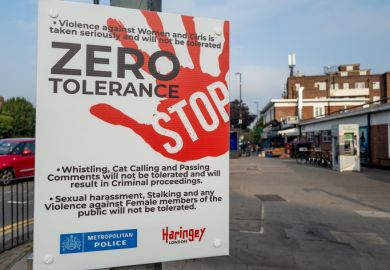This week we are celebrating International Women’s Day 2017, with universities across the world hosting events.
Each institution is doing its own thing, and it is great to see so much activity. But I think this also raises an important question: should we not all be coming together to share our experiences and to provide evidence-based solutions for what are clearly sector-wide challenges?
Universities are competitive places; we vie for research funding, for students, for national and global reputation. When it comes to striving for diversity and equality, however, surely we are all in it together and are all seeking the same goals?
We face common challenges and celebrate the same things, not least because we have mobile staff who move between one university and another. Providing a level playing field for women is not a competition but rather a campaign to bring about structural change in a higher education system in which policies and processes have been built up for decades by men.
Gender equality is high on the agenda within UK higher education. You just have to look at the enormous impact of the Athena SWAN Charter awards for institutions and departments to see the importance given to initiatives to promote gender equality. But while such initiatives are helping to bring about change, there is still a need for bolder action. In general, it is time for us to move beyond nice words and tinkering around the edges.
At a time when the sector is being called upon to embrace reforms and to respond to new demands, there is not just a moral argument for change but a business imperative.
A key consideration has to be UK higher education’s standing in the world. Our sector is respected worldwide, and we attract more international students than any country apart from the US. But if we are to maintain our position, we must overcome barriers standing in the way of women, who make up more than half of our students and 45 per cent of academic staff (but only just over a fifth of our professors).
In science, maths and engineering, it is still rare to find a female head of school or department. Even in medicine, where women make up 57 per cent of undergraduates, there are too few heads of school who are women. We should also ask why, when women comprise the majority of medical students, do so few go on to become clinical academics?
Inequality knows no boundaries, and we must be careful not to focus only on our own, local challenges. At the University of Leicester, we are part of a worldwide collaboration as one of only 10 global higher education institutions chosen to drive UN Women’s HeForShe campaign to involve men in the fight for gender equality. We hold regular partner phone calls with the other nine; this week, we shared our plans for International Women’s Day, including plans to amplify one another’s activities via social media.
Since being appointed deputy pro vice-chancellor for equality and diversity last year, I have sought out colleagues in similar positions at other UK institutions. We are just a small group from four universities – Leicester, Nottingham, Birmingham and Newcastle – but we hope to have expanded to take in a wider range before we celebrate International Women’s Day in 2018.
For us, it is about exchanging ideas and sharing good practice. When things work well, we don’t have to reinvent the wheel; we can all benefit from the results. We can be honest with each other when things go wrong and avoid making the same mistakes.
Following the Universities UK report Changing the Culture on gender-based violence and hate crime on campus, for example, Leicester linked up with its HeForShe partners to hold a successful “Ideathon” with students that produced some innovative ideas to raise awareness, such as hard-hitting theatre productions. We are working with our students to bring their ideas to life alongside our colleagues across the HeForShe network and with local colleagues.
Why keep these initiatives to ourselves when we can build on them through collaboration?
Cooperation between institutions on gender equality – and on diversity and inclusion in general – widens the field of enquiry and the database of robust, tried and tested interventions. The arguments for change are overwhelming. Collaboration, I believe, should be the model for higher education as it forges ahead in tackling gender equality not just in higher education but in schools, colleges, the workplace and wider society.
Kate Williams is deputy pro vice-chancellor for equality and diversity at the University of Leicester.
Register to continue
Why register?
- Registration is free and only takes a moment
- Once registered, you can read 3 articles a month
- Sign up for our newsletter
Subscribe
Or subscribe for unlimited access to:
- Unlimited access to news, views, insights & reviews
- Digital editions
- Digital access to THE’s university and college rankings analysis
Already registered or a current subscriber?








